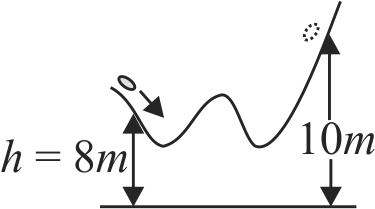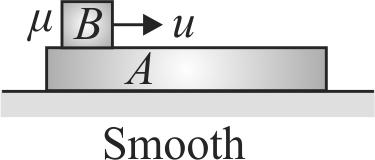355650
A dog of mass \(m = 4\;kg\) runs from the left end of a curved ramp with speed \({V_0} = 8\;m{\rm{/}}s\) at height \(8\;m\) above the ground. It then slides to the right and comes to rest when it reaches a height \(10\;m\) from the ground. The maximum increase in thermal energy of the dog-ramp system because of sliding is \(\left( {g = 10\;m{\rm{/}}{s^2}} \right)\)
355650
A dog of mass \(m = 4\;kg\) runs from the left end of a curved ramp with speed \({V_0} = 8\;m{\rm{/}}s\) at height \(8\;m\) above the ground. It then slides to the right and comes to rest when it reaches a height \(10\;m\) from the ground. The maximum increase in thermal energy of the dog-ramp system because of sliding is \(\left( {g = 10\;m{\rm{/}}{s^2}} \right)\)
355650
A dog of mass \(m = 4\;kg\) runs from the left end of a curved ramp with speed \({V_0} = 8\;m{\rm{/}}s\) at height \(8\;m\) above the ground. It then slides to the right and comes to rest when it reaches a height \(10\;m\) from the ground. The maximum increase in thermal energy of the dog-ramp system because of sliding is \(\left( {g = 10\;m{\rm{/}}{s^2}} \right)\)
355650
A dog of mass \(m = 4\;kg\) runs from the left end of a curved ramp with speed \({V_0} = 8\;m{\rm{/}}s\) at height \(8\;m\) above the ground. It then slides to the right and comes to rest when it reaches a height \(10\;m\) from the ground. The maximum increase in thermal energy of the dog-ramp system because of sliding is \(\left( {g = 10\;m{\rm{/}}{s^2}} \right)\)



